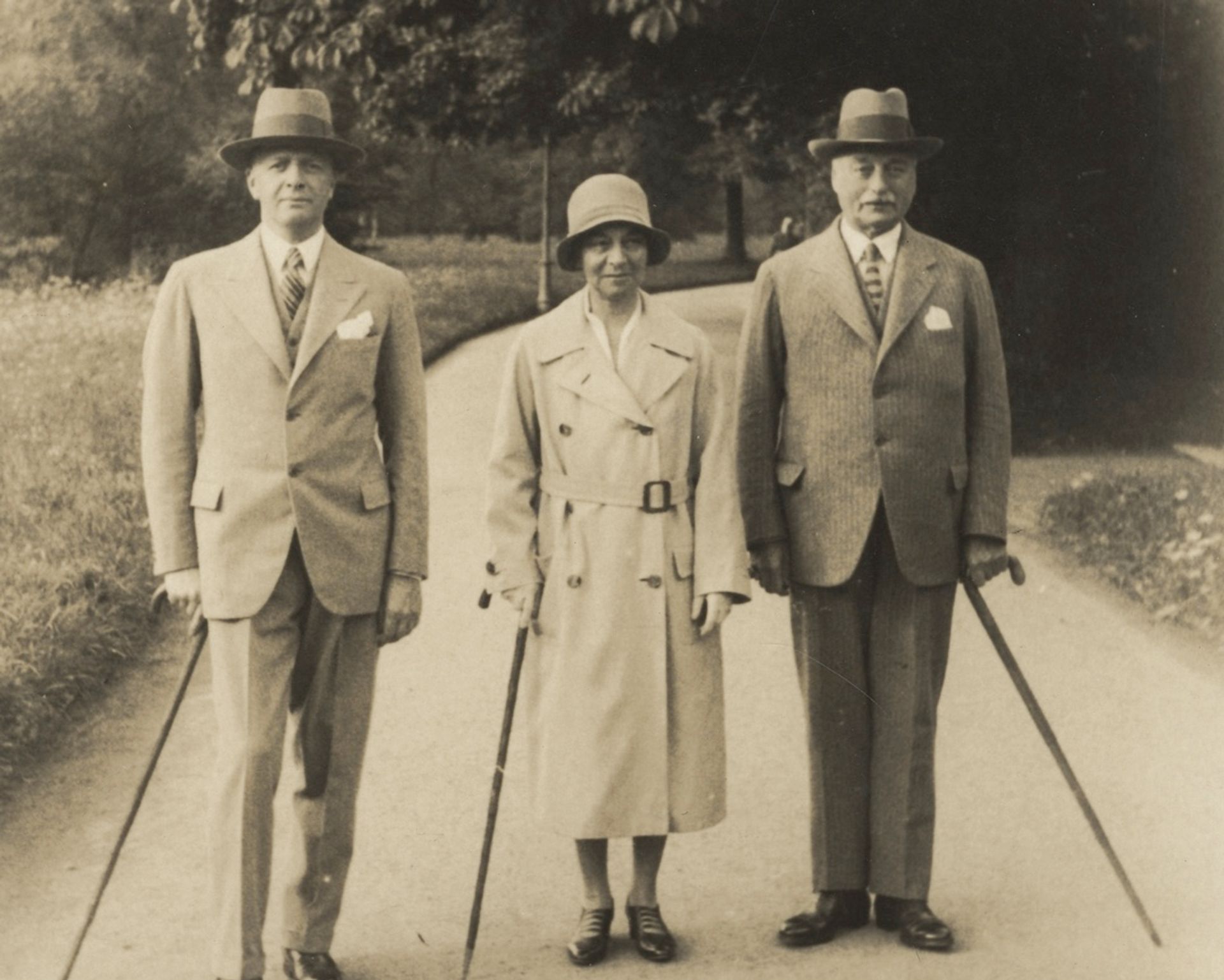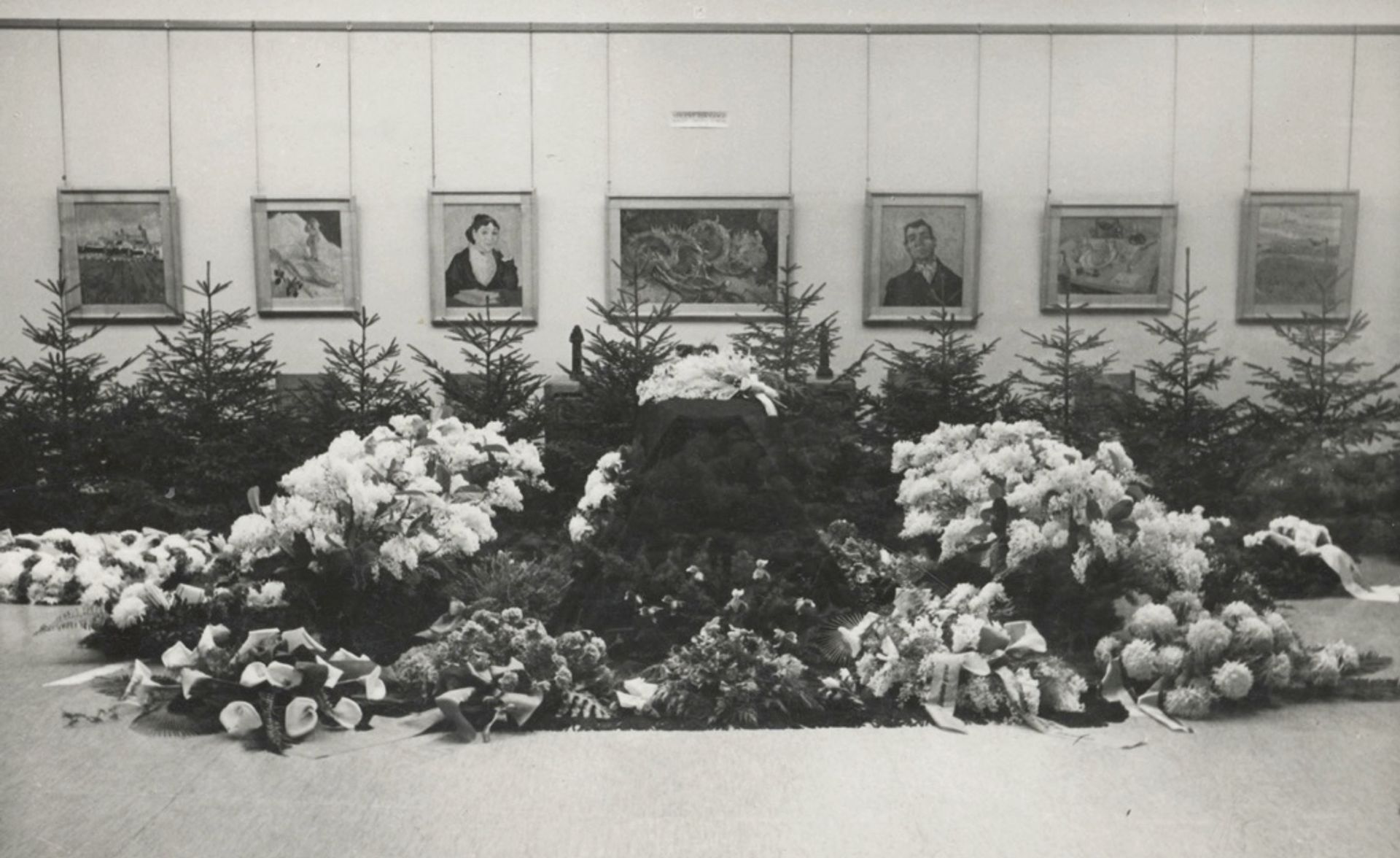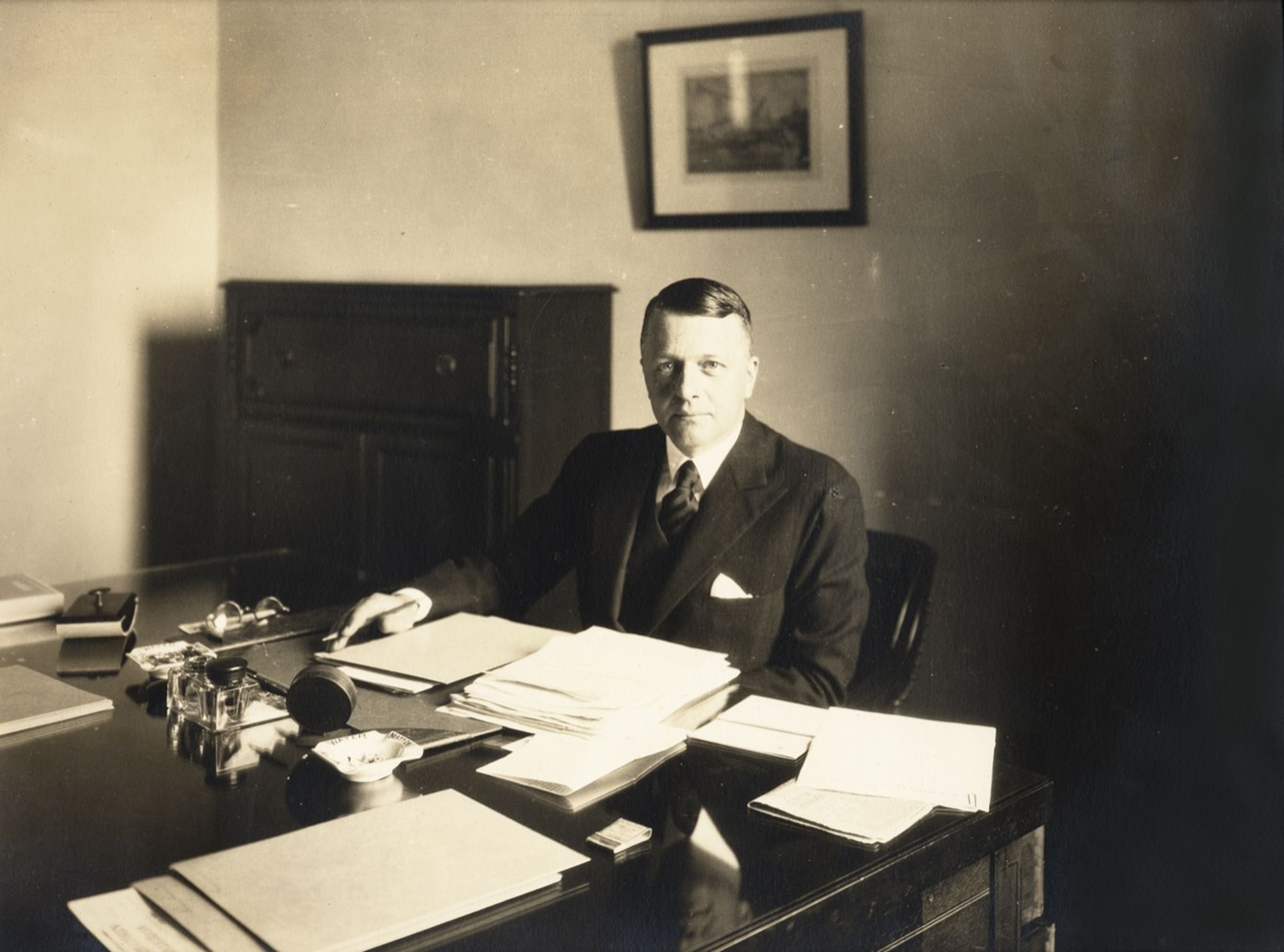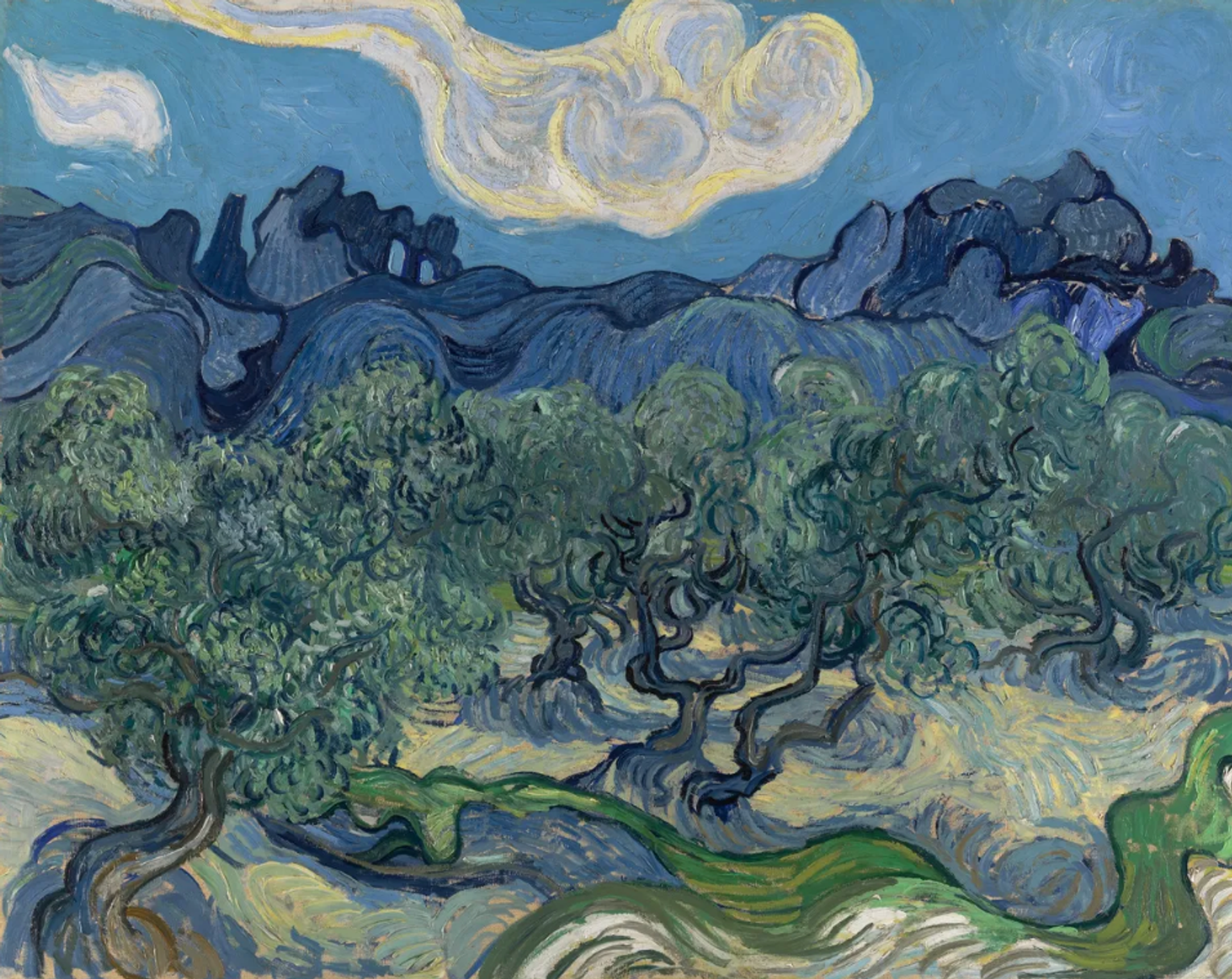Sam van Deventer, the director of the Kröller-Müller Museum during World War II, was deeply involved in collaboration with the Nazis, according to a new biography. Ariëtte Dekker discovered a disturbing story in her book The Confidant: Sam van Deventer (1888-1972)published in Dutch this week by Prometheus.
In 1942, Van Deventer even organized a family party for the 50th birthday of Arthur Seyss-Inquart, the Reich Commissioner for the German occupation forces in the Netherlands. Seyss-Inquart created a reign of terror and under his rule some 100,000 Dutch Jews were sent to their deaths. After World War II Seyss-Inquart was found guilty of war crimes and executed.
Van Deventer served as the lifelong artistic soulmate and administrator of the collector Helene Kröller-Müller (1869-1939). When they first met, in 1908, she was beginning to assemble what would turn out to be by far the largest private collection of Van Gogh’s work outside of the artist’s family. Her paintings and drawings would eventually be left for the museum she created near Otterloin a heather national park in the east of the Netherlands.
In 1908 Van Deventer was hired by Helene’s husband, Anton Kröller, as a junior employee in his business. From that moment on, he would be closely related to the couple, their commercial and shipping company and the art collection.
Although the German-born Helene had married Anton in 1888, she was always believed to have become Van Deventer’s mistress. For two decades, Van Deventer lived with the couple on the Kröller-Müller estate outside The Hague.
To write the biography, Dekker had access to a chest containing more than 3,000 letters from Helene to Van Deventer. Dekker believes that it is unlikely that a sexual relationship was actually consummated, as Van Deventer once wrote that Helene convinced him of the superiority of platonic love, over the “animal spirit” of sex. Helene was also twenty years older than him.

Sam van Deventer, Helene Kröller and Anton Müller (1920s) Kröller-Müller Museum (photo archive), Otterlo
Van Deventer soon became involved in helping Helene build her Van Gogh collection, although she initially found the artist difficult to appreciate. In 1914 he wrote to her that the artist’s published letters were “like a true mirror of the human soul”. Van Deventer soon became an enthusiast and later organized traveling exhibitions of Helene’s Van Gogh works in Switzerland, Germany and Belgium (1927-28) and in America (1936-37).
In 1919 Helene commissioned the Belgian architect Henry van de Velde to design a “grand museum” for her collection (which included many other artists from the late 19th and early 20th centuries), but a few years later the plan was aborted for financial reasons. . problems affecting Anton’s business. A more modest museum finally opened near Otterlo in July 1938. Helene, with much-needed help from Van Deventer, managed to see her dream come true. He died in December 1939, aged 70, just a few weeks after the outbreak of World War II.

Helene Kröller-Müller’s coffin among her Van Goghs in the Kröller-Müller Museum (December 15, 1939) Kröller-Müller Museum (photo archive), Otterlo
What is deeply troubling about Van Deventer’s life is the role he played after the Nazi occupation of the Netherlands in May 1940. As an assistant to the opportunist Anton, he did his best to be useful to the Germans, who quickly promoted him to director. from the Kröller-Müller Museum. Anton died in December 1941.

Sam van Deventer at the Kröller-Müller Museum (November 1940) Kröller-Müller Museum (photo archive), Otterlo
Although he never joined the Nazi party, Van Deventer signed letters to the German authorities “Heil Hitler” and gave them a Nazi salute. It allowed the Germans to temporarily store art, including some of the looted Jewish victims, in the museum’s bomb shelter.
Van Deventer arranged the sale of three of the museum’s German Old Masters, including Lucas Cranach. Venus with Love the Honey Thief (after 1537), for the personal collection of Hermann Göring, Hitler’s deputy. Van Deventer then spent part of the proceeds acquiring paintings by Camille Pissarro and Camille Corot that had been looted from Jewish owners and delivered by German art dealers.
What must be acknowledged, however, is that Van Deventer successfully protected Helene’s important collection of modern art from war damage. The Van Goghs were safely kept in a specially constructed shelter, built under two meters of concrete and eight meters of sand. He was also successful in protecting the national park and its hunting lodge during the war.
On April 20, 1945, the Kröller-Müller Museum was liberated by Canadian troops. Two days earlier, Van Deventer had been arrested and would then spend 15 months in custody. The first attempts to charge him with war crimes, although it did not happen, he was accused of collaboration. He was released in July 1946 and in 1950 the case against him was postponed. Meanwhile, in 1948 he had been formally dismissed as director of the museum, which had reopened in October 1945 under a new acting director, Willy Auping.
Although the Kröller-Müller Museum’s Van Gogh collection is well known today, what is often not appreciated is that Van Deventer had his own personal collection of works by the artist. The five paintings he owned had all been bought between 1915 and 1925, when prices were not so high. These were: The ox cart (July 1884, now Portland Art Museum), Reclining naked (early 1887, Kröller-Müller Museum), Basket of oranges (March 1888, Goulandris collection, Greece), The Olive Trees (June 1889, Museum of Modern Art, New York) e Peasant girl mowing (after Millet) (September 1889, private collection). He also had three Van Gogh drawings and a fake self-portrait.

by Van Gogh The Olive Trees (June 1889) Museum of Modern Art, New York
By far the most important work was The Olive Trees, now at MoMA. Van Deventer had bought this in 1925 from the estate of the distinguished German collector Karl Ernst Osthaus, paying 20,000 florins (then about $8,000). He is believed to have sold it, voluntarily, to a “German buyer” in 1940, for 100,000 guilders. This was recorded for the government’s Art Property Foundation after the war.
But who was the mysterious German buyer? Dekker believes it is “probable that he was a high-ranking Nazi official”, possibly even Göring himself (during the war he acquired twelve Van Goghs, many of them looted from Jewish victims).
The whereabouts of The Olive Trees during the war he remains unknown, but in 1946 he was with two Swiss-based traders, Margarete Schulthess and then Nathan Katz, both located in Basel. The well-known American collector John Hay Whitney bought the painting in 1947 and his widow bequeathed it to MoMA in 1998.
As for Van Deventer, she lived a quiet life after the war, funded by the gradual sale of her personal art collection. In 1966 he moved to Switzerland and bought the house of the late architect Van de Velde.

by Van Gogh Reclining naked (early 1887) Kröller-Müller Museum, Otterlo
Van Deventer died in 1972 and his ashes were buried next to the graves of Helene and Anton. He had only kept two of his Van Goghs at the end of his life: the painting Barely reclined and the drawing Woman with a wheelbarrow (March 1883). In 2005 both were bequeathed by his son Rudi to the Kröller-Müller Museum.

